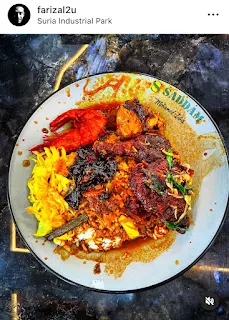Nasi kandar is a cherished dish that speaks to the cultural tapestry of Malaysia, particularly among the Indian Muslim community, known as Mamaks. This flavorful rice meal, characterized by its fragrant steamed rice served with a variety of rich curries and side dishes, has garnered immense popularity not only among Malaysians but also among tourists, making it a quintessential part of the Malaysian dining experience.
The origins of nasi kandar can be traced back to the northern regions of Malaysia, particularly Penang, where it emerged in the late 19th and early 20th centuries. The dish was born out of the needs of Indian Muslim immigrants who sought to establish a livelihood in a foreign land. These early vendors, known as “kandar” men, would carry their meals on a pole over their shoulders, traveling from place to place to serve workers and locals. The term “kandar,” meaning “to carry” in Tamil, reflects this humble practice. Due to its portability and adaptability, nasi kandar quickly gained popularity as it offered a hearty meal for those seeking affordable and satisfying food.
Over the decades, the dish has evolved into a culinary icon. The rich array of flavors, combining Indian spices with Malay and Chinese influences, makes nasi kandar unique. Diners often choose from an assortment of curries, such as chicken curry, 'black beef' (daging masak hitam), or fish head curry, along with delectable sides like fried chicken, egg, and vegetables. The hallmark of nasi kandar is the way these dishes are plated over the rice, creating a vibrant, aromatic feast that excites the senses.
Nasi kandar also serves as a social connector. It is more than just food; it’s a communal experience where friends and family gather to enjoy a meal and share stories. The availability of 24-hour nasi kandar establishments has transformed this dish into a late-night staple for many, catering to diverse crowds from students to night-shift workers. In this way, nasi kandar reinforces a sense of community, giving people a place to gather, celebrate, or simply unwind with a comforting meal.
However, with the rise of its popularity, the dish faces both positives and challenges. On one hand, the booming nasi kandar industry has created countless job opportunities, bolstered local economies, and showcased Malaysia’s multicultural heritage to the world. Additionally, it fosters a sense of pride among the Indian Muslim community, as it symbolizes their contribution to the country’s culinary landscape.
On the flip side, the increasing commercialization of nasi kandar has led to a certain dilution of authenticity. Some establishments prioritize mass production over traditional cooking methods, resulting in a loss of the homemade essence that originally defined the dish. Furthermore, the rise of chain outlets has led to concerns about the gentrification of this beloved cuisine and its potential disconnection from the very culture it represents.
The good and bad images surrounding nasi kandar also extend to health considerations. While the dish is celebrated for its robust flavors, it is often criticized for being high in calories and saturated fats. This presents a dilemma as consumers become increasingly health-conscious, pushing some restaurants to adapt by offering lighter alternatives without compromising flavor.
In conclusion, nasi kandar stands as a testament to Malaysia’s diversity, illustrating the intersections of culture and cuisine. Its journey from humble street food to a popular dining choice encapsulates not only the story of Indian Muslims in Malaysia but also reflects the broader narrative of multiculturalism in the country. As it evolves, it continues to adapt to contemporary tastes while preserving its rich heritage, ensuring that nasi kandar remains a beloved favorite for future generations. Whether enjoyed in a bustling restaurant, a quiet corner shop, or at a late-night stall, the legacy of nasi kandar will undoubtedly thrive as a symbol of unity and flavor in Malaysia’s vibrant food culture.
farizal.com






Comments